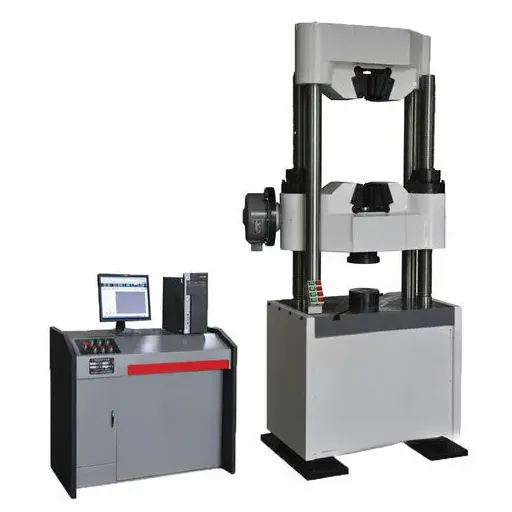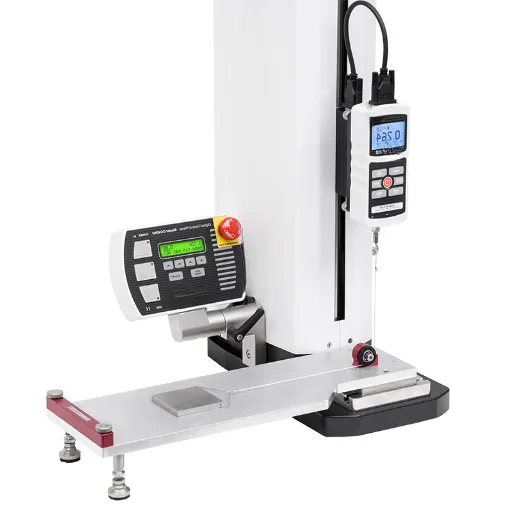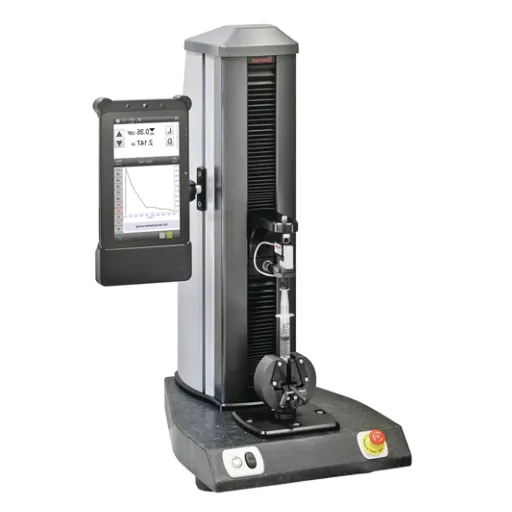Compression has numerous uses in many fields-from engineering and material science to everyday objects such as springs, cushions, and even our body. But what exactly is compression, and how does it operate? This blog post is an absorption of the wonderful world of compression and the forces that create it. Whether you want to find out how compression makes structures bear loads, or how it comes in handy in technology and design, this article will thoroughly discuss the subject. So let’s get ready to explore the science of compression force, its uses, and how it becomes a component in making the world that we interact with every day. Stay tuned because some insight might just change your perspective on forces working around you.
Fundamental Principles of Compressive Force

Understanding Compressive Stress
Compressive stress is the internal force within a material, resisting any action to compress it. It occurs whenever opposing forces try to push toward one another, shortening the length of a material or deforming it. This type of stress is crucial in structural mechanics, allowing materials to remain stable under loads applied upon them.
The compressive stress’s magnitude is determined by dividing the registered force by the cross-sectional area where the force is applied. The resulting magnitude of compressive stress tells how much stress a material can endure before its deformation or failure. Engineers use compressive stress calculations, for example, to develop the strength and safety of materials such as concrete or steel for erecting a structure, bridges, etc.
From the standpoint of practical applications, compressive stress helps in choosing the appropriate material. Rock or concrete with great compressive strength is meant to support heavy loads, while materials of low compressive strength may be best suited for another application. Predicting and working with compressive stress is therefore demanding, ensuring a structure’s integrity and durability.
Stress and Strain in Materials
Stress and strain are fundamental terms in the study of material mechanics. Stress is the internal force per unit area developed within a material as a reaction to an external leaving force. It may either be tensile stress, compressive stress, or shear stress, depending on the direction and nature of the external force. Proper evaluation of stresses is a prerequisite for deciding on the behavior of a material under different loading conditions.
Strain is defined as the measure of deformation or displacement of a material under stress. It is expressed as the ratio of change in dimension of the material to the original dimension. Strain may be elastic, i.e., the deformation disappears after removal of the load, or plastic, i.e., permanent deformation occurs.
The relationship between stress and strain is of great importance for engineering and design. This relation is displayed through a stress-strain curve, which shows the behavior of a material when gradually loaded. From the curve, a number of important points on the behavior of the material can be ascertained, including the elastic limit, yield strength, and ultimate strength. By analyzing properly, stress, and strain will ensure that materials are used within the capacity, which ultimately ensures the safety and desired performance of structures and other applications.
Compressive Strength of Materials
Compressive strength or crushing strength is the quantity of compressive stress a material withstands to fail or break. It is an important chemomechanical characteristic while assessing structural elements and checking if a material will fit some application. Construction materials like concrete, steel, and stone are standardized by different agencies for compressive strength testing.
They measure compressive load by applying an increasing load on the test specimen until the specimen fails. ASTM and ISO provide standard methods for conducting tests on different materials so as to make comparisons. The test values of pressure are expressed in MPa or psi. They greatly assist the engineering community in deciding the best materials for constructing a structure, which will safely bear those loads and stresses expected of it.
This strength is affected by many factors, the nature of the material itself, environmental conditions like temperature, siege, and moisture. For instance, in the case of a concrete mixture, factors such as the water cement ratio, curing time, and the quality of aggregates play a very significant role in affecting this strength. Knowledge of the compressive strength will help ensure that buildings, bridges, and other critical infrastructural elements are well built for durability, stability, and safety.
Applications of Compressive Force in Various Industries

Structural Integrity in Construction
Compressive force functions to guarantee structural integrity by allowing materials like concrete, stone, and steel to stand the weight and pressure. All design work of buildings, bridges, and other structures is performed with this phenomenon to ensure they remain stable under varying loads and conditions. The capacity to resist compressive loads is one of the main properties that are assessed by an engineer to see if the structure can ensure safety for the given loads throughout time.
To determine compressive strength, engineers use tests in which a gradually increasing load is applied to a specimen until failure occurs. This assures the selected materials perform up to the required standards for construction. For instance, concrete must attain specified strength levels during its curing in order for it to support the load capacity it has been designed for. Such careful evaluation prevents failure of the structure, especially in those areas that are vulnerable to earthquakes, heavy winds, and heavy trafficking wherein compression forces are often applied.
These compressive strength tests for construction, therefore, assure safety and durability. By virtue of their knowledge of materials and constant inspection, engineers can address any possible weakness present in a structure before it reaches a critical level. This enhances safety and public interest and does save huge amounts on maintenance and conserve resources. Therefore structural integrity is important, and compressive force analysis remains one of the main pillars of present-day construction.
Design of Machinery and Engineering
Compressive force is that mechanical force which tends to compress or shorten the material on which it acts. It is one of the fundamental forces much considered in engineering and material science. This force brings about either a decrease in volume or an external reduction in length, width, or shape on the material, depending on the structural system and the applied load.
In columns, beams, or arches where the loads are applied vertically or axially, compressive forces are very commonly acting. These forces act as a closing pressure acting against a material to try to crush or compress the material. In an actual case, the materials must be able to resist the applied pressure without failure or a noticeable amount of deformation. To ensure the integrity of construction elements and safety of execution conditions, engineers calculate these forces and subject materials to compressive tests under conditions that will simulate the actual working conditions of the construction members concerned.
The measurement and understanding of compressive force are paramount in the processes of designing buildings, machinery, and infrastructure. That way, by analyzing the ability of a given material in compression, engineers can select materials and adapt their designs to take the stress more satisfactorily. This way, the possibilities of failure will be reduced, while the service life thereof will be increased and resource inputs optimized.
Manufacturing of Durable Goods
Durable goods refer to products intended for extended use, typically lasting over three years, such as machines, appliances, and vehicles. The manufacturing of these goods involves designing them to withstand prolonged periods of stress, repeated use, and environmental exposure. One critical aspect of their production process is understanding and applying compressive force, as this helps ensure structural integrity and material reliability.
Compressive force is the pressure exerted on an object or material, causing it to compress or shorten in size. For instance, when weight is placed on a column or a piece of wood, compressive force pushes the material inward, testing its strength. This force is a vital concept in engineering and material science, as it determines how a material reacts under load and influences decisions regarding material selection in manufacturing processes.
In the context of durable goods, engineers and manufacturers analyze compressive force to ensure products can sustain expected loads without deforming or breaking. Proper evaluation of compressive strength enhances efficiency by reducing failures, minimizing excess material usage, and extending the service life of goods. This approach ultimately supports safety, durability, and cost-effectiveness in durable goods production.
Real-World Examples of Compression

Columns Supporting Bridges
Structural elements subjected to compression: Columns supporting bridges are major examples. The vertical support must bear the weight of the bridge deck, cars, and environment, which may include winds or an earthquake. These columns are of utmost importance in terms of strength and stability, as even the slightest structural failure can pose life-threatening hazards.
Typically, to develop good performance under compression, construction takes place using reinforcing steel bars and concrete with high compressive strength. Their shape and size have been very carefully designed by the engineer to balance the load throughout and prevent any buckling. Consideration is given to the height of a column, the diameter of a column, and the load that the column must bear, probably taking into consideration all these factors.
The bridge columns must be periodically inspected and maintained for their life. These inspections should be situations of cracks, situations of corrosion, or signs of wearing that may empty the integrity of the column. The combination of quality materials, precision engineering, and continuous maintenance enables columns to effectively support bridges under great compressive forces for decades.
Compression in Car Engines
Compression in car engines is an essential operation that significantly affects engine performance, efficiency, and power output. The process of compression takes place in the cylinders of the engine, where the piston compresses the air-fuel mixture before ignition. When compressed, the mixture rises in temperature and pressure, amounting to an energy-rich mixture ready to combust under an igniting spark.
Higher compression ratios usually bring about more efficient engines. Engines having high compression ratios can draw greater energy from the air-fuel mixture and thus have the capacity for better mileage or power delivery. However, at very high compression, knocking may occur because the air-fuel mixture could ignite prematurely. Technologies like variable valve timing and direct fuel injection are used in most modern engines to control this problem and allow for better control of the compression process.
The optimum compression ratio, however, depends on the design of the engine and the intended application. For example, higher compression ratios are commonly applied in sports cars to generate more power, while regular vehicles want a balance between efficiency and robustness. Proper care, including the use of recommended fuel grades and keeping the engine condition good, is a necessity to ensure proper compression and to avoid engine problems down the road.
Examples of Compression in Everyday Products
Compression functions variously in many different products we encounter daily, with performance characteristics differing in each instance. The most common one is air compressors used in tools such as nailers or spray painters. These machines depend on air compression to work effectively, transferring force or positioning for construction, automotive repair, or household work.
Other examples of packaging compression include vacuum-sealed storage bags, which expel air to compress clothing or other objects for simpler storage or transport. Similarly, food packaging may employ compression to keep freshness and prolong shelf life by limiting oxygen exposure.
And then, compression technology is vastly used by portable data formats such as images, videos, or musical files. While file compression attempts to reduce the size of digital content with little to no noticeable loss in quality, this allows easier storage or online transfer of the files. This practical application sometimes goes to increase the accessibility and everyday usage of the digital media.
Mathematical Formulas Related to Compressive Force

Calculating Compressive Stress
A compressive stress is the internal force per area resisting the compression inside a material. Its formula can be expressed as:-
Compressive Stress (σ) = F / A
Wherein:
- σ stands for compressive stress,
- F is the compressive force applied to the object, measured in Newtons (N),
- A is the area of the cross-section over which the force is acting, measured in square meters (m²).
Ordinarily, the generated unit for compressive stress measures Pascals, wherein 1 Pascal is equal to 1 Newton per square meter (N/m²).
In compressed terms, the measure of compressive stress is realized by measuring the force applied to the object and by determining the cross-sectional area of the material undergoing compression. The preceding step is then followed by dividing the force by the cross-sectional area. By way of example, if a force of 1000 N is applied on a material with a cross-section area of 0.01 m², then the compressive stress will be:
σ = 1000 N / 0.01 m² = 100,000 Pa (or 100 KPa)
With an understanding of compressive stress, a structure and materials can be designed to withstand certain forces needed to cause deformation or failure. This is one of the calculations used by engineers and material scientists to check the structural integrity of a building, machinery in various load-bearing applications, land vehicle construction, etc.
Understanding Strain in Compressive Forces
The strain due to compressive forces is a measure of deformation that a material experiences when compressive stress is applied to it. The strain describes how much a material shortens or compresses when a load is applied relative to the original size. Being a dimensionless quantity, strain is chiefly expressed as the ratio or percentage of change in length to original length. The formula below gives this relationship:
Strain (ε) = ΔL / L₀
Under compressive force, the molecules within a substance are pressed against one another. The strain exhibits varia with varying compressive stress and considering different properties of the material such as elasticity. Elastic materials resume their initial state the moment the external force is removed; others are either deformed plastically or completely fractured when the imposed load exceeds their yield strength.
Understanding strain holds utmost significance in engineering and material science for deciding if a material or a structure can withstand compressive forces without any deformation or catastrophic failure. With strain in their arsenal, experts may choose materials, optimize structures, and guarantee safety in construction, aerospace, and manufacturing industries.
Application of Formulas in Real Scenarios
Relying on strain-related equations is one of the crucial facets for assessing the integrity and durability of a material under real-world conditions. The bridge construction industry uses these strain equations to ascertain quantifiable measurement results of how materials like steel or concrete are straining under a certain load of traffic or environment. Furthermore, engineers need to ascertain that a material can endure such stresses without undergoing permanent deformation or without failure so as to ensure the safety and longevity of the structure.
In contrast, strain calculations must be taken into account for the design of aircraft components in the aerospace industry. Must carry out tests on materials subject to extreme force during takeoff, flight, and landing. Using relevant formulas, engineers test the elastic limits and strength of materials like alloys under different loads so that catastrophic failure can be averted with the safety of passengers ensured.
Another major setting would refer to manufacturing, where strain formulas assist optimization in product design and processes. This may be in metal forming or plastic molding, where an understanding of material deformation gives a handle of the process to minimize waste but produce the required shape and dimensions. The calculations ensure that all goods conform to quality standards, and at the same time, their manufacture is economical and their use is reliable.
Measuring Compressive Force

Tools for Measuring Compressive Force
There are many devices commonly used for compressive force measurement, with each being more accurate under a given scenario or situation. Load cells are among the most popular devices, providing very precise measurements. They measure the force via the conversion of an electrical signal throughout the pressure placed on a transducer. Their fundamental reason is to be able to accomplish any transduction action from variation in force across a wide range of industrial and research applications.
Next would be the universal testing machine, an important one for efficient compressive force measurement when it comes to material testing. Universal testing machines can test many materials and deliver information about compressive strength, elasticity, and deformation behavior under load. Universal testing machines are used in quality control and material development.
For smaller compressive force applications or for measurements to be conducted in the field, force gauges are much more portable. Force gauges are used for fairly quick readings of compressive force and for routine inspections. Anyway, depending on how accurate the reading needs to be, on the scale of the force itself, and also considering the context of the application, all kinds of evaluating compressive force are possible.
Strain Gauges and Their Applications
Strain gauges are primarily used to measure deformation or strain in a material or object. The basic principle is that when a material deforms, its electric resistance changes. By placing a strain gauge on a structure, one can measure the change due to strain and convert that change to some data, making it an essential tool in engineering and material testing.
A major application of strain gauges is in structural health monitoring. An engineer uses these devices to determine whether stress or deformation could lead to failure in the structure of a bridge, a building, etc. Also, strain creates a vital role in manufacturing and product testing by aiding a designer to know how materials behave under load, thus ensuring component reliability and safety.
In medicine, strain gauges are widely used for biomechanical applications. Using strain gauges in prosthetics, orthotics, and various other types of medical devices can keep track of force and movement to enhance function and comfort. This versatility across industries verifies its importance in securing safety, efficiency, and innovation in modern applications.
Universal Testing Machines Explained
Universal Testing Machines, or UTMs, are specialized machines that analyze the mechanical properties of a material under variable conditions. The typical tests a machine can conduct involve casting the material in tension or compression, or sometimes bending, to get to the strength or deformability or any other related characteristic. Such tests become a necessary step for quality control, research, and other supporting functions in material development while serving in all industry requirements for materials to meet certain performance parameters.
A UTM typically consists of an arrangement that supports the loading frame, a force-generating system, and fixtures that accept the test specimen. The UTM subjects the specimen to a controlled force and simultaneously measures the response, usually deformation or fracture, while the data analyzed will return values of tensile strength, yield strength, elongation, etc. This information enables the materials to behave reliably, and hence safely, in application.
UTMs find a host of applications in construction, aerospace, automotive, and manufacturing industries. Testing materials correctly provide a further impetus for developing and upgrading stronger, safer, and more efficient products. This flexibility and accuracy render them a necessity in the discerning method of material testing lying at the center of innovation within various industries.
Frequently Asked Questions (FAQ)
Q: What is meant by compressive force?
A: It refers to the force that acts to compress or shorten a material. It is a kind of mechanical force applied in opposite directions on the length of the material, thus ultimately decreasing the volume.
Q: How do compressive forces compare with tensile forces?
A: Compressive forces are generally considered opposed to tensile forces. Compressive forces act to push materials together; whereas tensile forces pull them apart. Understanding the difference between these types of forces is essential in structural and materials engineering.
Q: What is the greatest compressive strength of a material?
A: It is the highest amount of compressive stress that a material can withstand before failure. It is usually measured in pounds per square inch (psi) and varies greatly depending on the materials.
Q: Tell me about the way compression and tension will act on one another.
A: Compression and tension are opposing forces, working opposite one another within a material or a structure. A compressive load causes the material to experience compressive stresses, while tensile forces cause tensile stresses. Knowing how these forces work together is fundamental in assuring the resilience of structures.
Q: Which tests are applied to find the compression strength?
A: To evaluate the compressive strength of a material, testing under compressive force is carried out, mainly to assess concrete. This involves applying compressive load to a specimen until it breaks so engineers may infer the maximum compressive load the material can sustain.
Q: What are the factors influencing compressive strength of concrete?
A: Factors influencing compressive strength include the cement type materials type, mix design water quantities, and curing condition. A higher compressive strength results from low water-cement ratio and good aggregates.
Q: What is the importance of reaction force under compressive load?
A: The reaction force is important in maintaining an understanding of how compressive loads are supported by structures. When a compressive force acts on a material, reaction forces of equal magnitude but opposite in direction act on the points of contact, balancing the structure under compressive force.
Q: How do atoms and molecules behave when compressed?
A: Compression forces, when exerted on a material, try to bring its constituting atoms and molecules closer. Therefore, if the force acting on the material is greater than its compressive strength, deformation occurs.
Q: Why is uniaxial compression a very important step in material testing?
A: The uniaxial compression is one method wherein forces are applied in one direction only, and thus provides a straightforward analysis of compressive strength. Moreover, it offers the engineer a fairly straightforward means of judging how the material will behave under axial loads, very important in design.
References
- What is Compression Force? – Tekscan – Explains compressive force as a physical force pressing inward on an object, causing it to compact.
- Understanding Compression Force: Key Concepts & Benefits – SensorProd – Defines compression force as the application of power or pressure that squeezes or compacts an object.
- Compression (physics) – Wikipedia – Provides a detailed explanation of compression in mechanics, involving balanced inward forces on a material or structure.
- What Is Compression Force? – MT Copeland – Discusses the concept of compression strength and how materials withstand external forces.
- What is Tensile vs Compression? – Tevema – Explains how compression forces act along the axis of force, exerting a squashing effect on materials.







